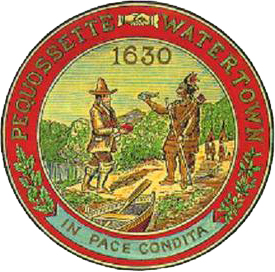
Rebuilding Watertown Middle School is the largest addition to Watertown’s five-year capital plan, and funding the $84 million project will require moving other projects to future years. The plan also includes projects that occur year after year, such as street and sidewalk repairs.
City Manager George Proakis presented the Proposed Fiscal Year 2026-30 Capital Improvement Program (CIP) to the City Council on Jan. 28. The plan includes a grand total of $273 million, about $57 million more than the FY2025-29 CIP mostly due to the addition of the Middle School project.
The City Council’s Committee on Budget and Fiscal Oversight will discuss the proposal and come back to the Council with a recommended plan.
The Middle School project became a priority after the Council voted in November to make renovation of the school as the next major project constructed by the City of Watertown. One of the primary reasons for the decision to keep open the possibility of using the modular classes set up on Moxley Field for students while the school is under construction.
The CIP includes $84.7 million for the Middle School, with $70 million to be borrowed by the City, Proakis said.
There are other projects that were on the list, including:
- Senior Center/Recreation Center
- Watertown Square Plan Implementation
- East End Fire Station
- Department of Public Works Staging Area
In the proposed Capital Plan, the Senior Center / Recreation Center will be pushed to the later years of the five-year plan, Proakis said. A study will determine the best location for these programs, either together or separately, he added.
The East End Fire Station cannot fit modern fire ladder trucks, and it is a small site. The project will be addressed in a year beyond the five-year CIP, Proakis said, but the City will continue to plan for the new station and look for a site for the new building.
Redesigning Watertown Square improvements will continue, and the City will seek ways to fund it besides borrowing money. Proakis said alternate financing could come from using district improvement financing which enables a municipality to identify and capture incremental tax revenues from new private investment in a specific area. The City could also explore creating a parking benefits district (where parking revenues from a specific geographic area in which parking revenues can be collected and reinvested), getting a grant from MassWorks, and/or creating a public-private partnership.
The City will also look for temporary and permanent sites for staging for DPW projects and snow storage.
The CIP also includes what Proakis called “core work.”
“We did a lot to make sure that some of the core work that has been important to the Council remains,” Proakis said. “There is a commitment to work on streets and sidewalks, the long road/connector project — those are all still funded in there.”
Work in the current year that will be impacted include the Parker Annex Building and Victory Field.
“The work on the Planning Department is slightly over budget, so there is some additional borrowing in the CIP there, but we hit the point in the history of the Parker Annex Building, where this project causes us to trigger a whole host of upgrades, including ADA upgrades and plumbing code upgrades,” Proakis said. “Essentially, we knew we would have to do at some point and we shifted them back and forth in the CIP but we needed to shift earlier in the next three years some substantial upgrades to the building.”
Proakis said the non-City tenants may help pay for the cost of the projects, and he will discuss that further during the Budget and Fiscal Oversight meetings.
The City will soon put a project out to bid for the upgrades to the second floor of the Parker Building, and the Food Pantry, which is funded through an ARPA grant awarded by the City Council.
Some park projects will move earlier or later, and a few will not be done in the five years covered by the CIP. While Victory Field Phase 2 (the track and courts) is scheduled to begin in July 2025, Phase 3 (the field house and locker rooms) will be pushed back a fiscal year and is scheduled to be constructed in the summer of 2027.
The construction of the tot lot at Saltonstall Park will be moved forward a year, and will now begin in the summer of 2027.
Moxley Field will be delayed until the Middle School project is completed. Three projects are scheduled for the summer of 2031: Filippello Park Grove improvements, Filippello pickeball courts, and the Casey Park and playground. The Filippello Park Arlington side playground is scheduled for 2032.
The projects in the CIP are paid for with a mix of sources, the majority of which is $169 million in borrowing through issuing bonds. Proakis aims to keep the amount of tax revenue used in the CIP under $4 million a year. The five year total is $19 million. There are also $57 million in projects that have the funding yet to be determined.
Proakis said he is committed to paying for the projects within the confines of Proposition 2 1/2, so he will not seek a tax increase through a debt exclusion to pay for the CIP expenses.
See the proposed Fiscal Year 2026-30 Capital Improvement Program by clicking here.